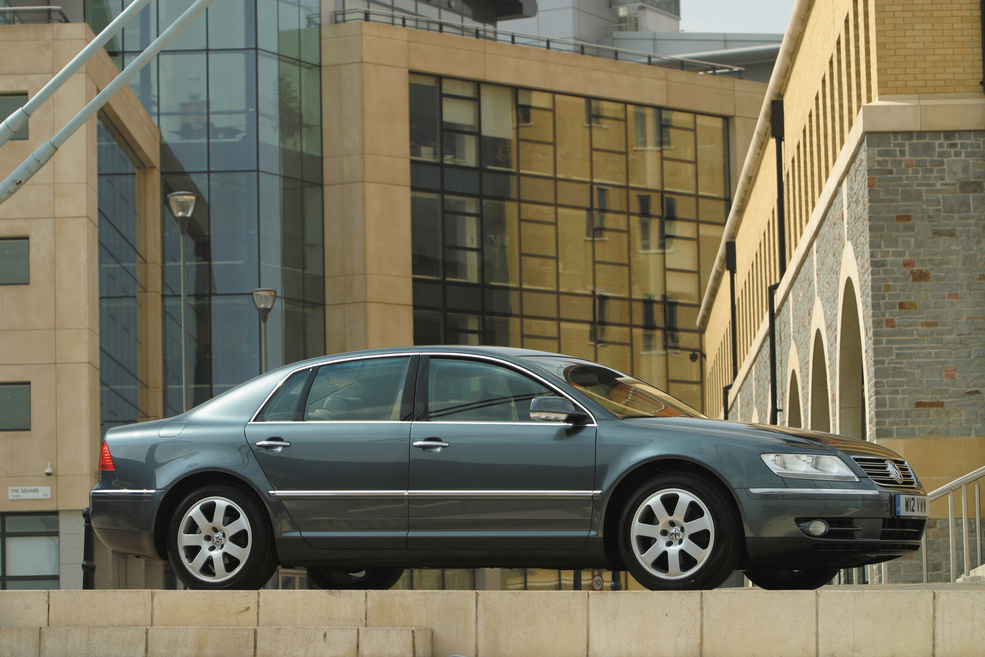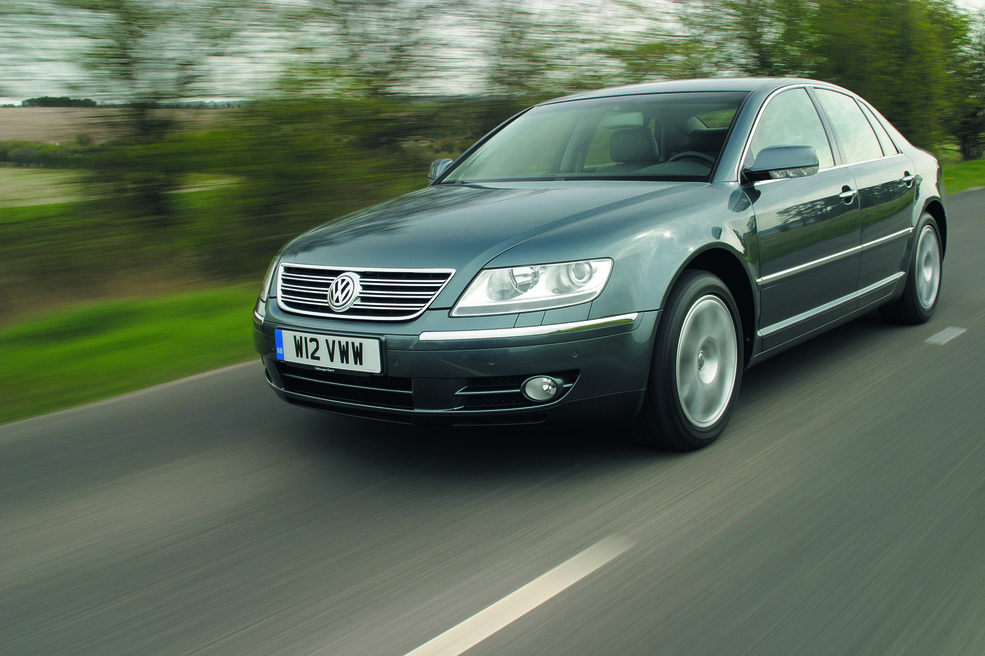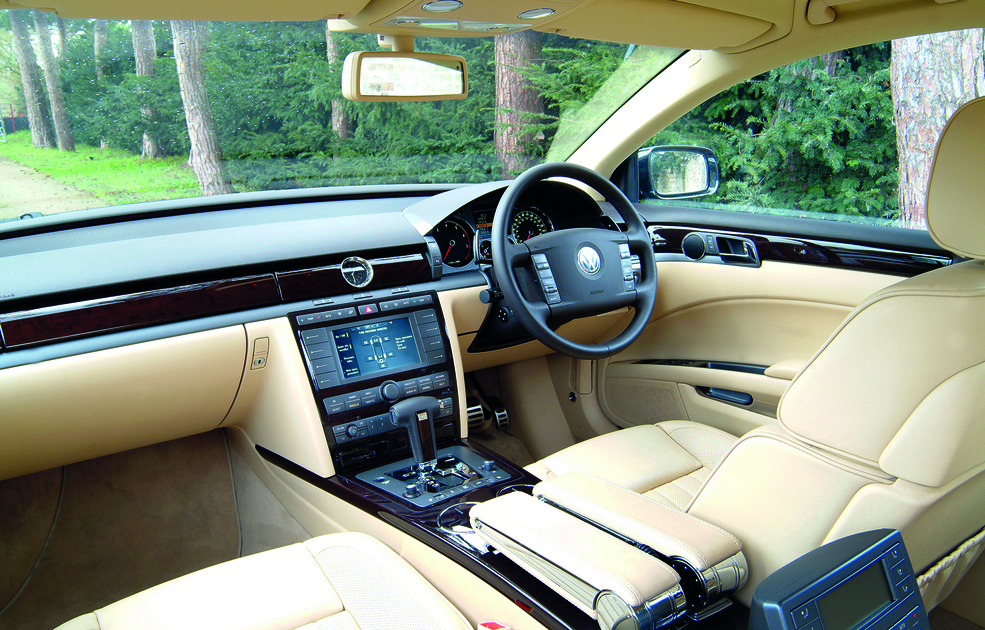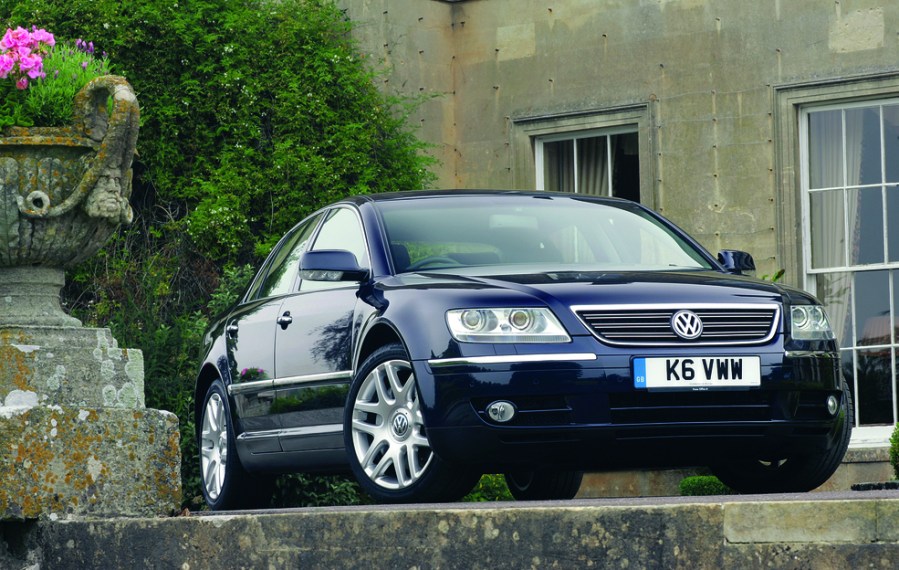The magnificence of Pïech’s grand folly… either an overgrown Passat or a Bentley in disguise, depending upon your level of cynicism. Is the VW Phaeton an emerging classic though?
Companies like Volkswagen don’t drop the ball too often but when they do, the results can be tremendous. There was always going to be something ironic about the idea of a brand named after the ‘People’s car’ chasing the very top end of the luxury saloon segment but with proud Porsche blood running through his veins, then-VW chief, the autocratic Ferdinand Pïech, wouldn’t take no for an answer.
The plan was for VW to use the group’s considerable engineering resources to develop a VW-badged car which would challenge the very best in the premium executive segment, surpassing even sister brand Audi in its ambitions.
This was a real no-holds-barred plan and such was the budget earmarked for the project that the company even built a showcase factory for the car before it had even been designed: the so-called ‘glass factory’ in Dresden which now turns out VW’s hybrid models.

First shown as the ‘Concept D’ [named after the ‘D’ market segment] concept at the 1999 Frankfurt show, the original show car featured a hatchback, whereas even back then VW knew the Chinese and Asian markets would be taking the bulk of sales and so the production version would need be a regular three-box saloon.
The design parameters were laid down by the mercurial Pïech himself and he wasn’t messing about, although some of his requirements were uniquely German: among them a requirement that the car could be driven at 300km/h (186 mph) all day in 50°C heat while keeping the interior temperature at a constant 22°C… even though the car would be in practice limited to 155mph. Indeed, it was the climate control system which was one of the car’s talking opoints, with a so-called draught-free design and motorised flaps which covered the vents when the car was parked up.
The Phaeton was built on the extended ‘D1’ platform shared with the long-wheelbase Audi A8 of the time and naturally many parts were shared, although the Phaeton was slightly heavier than the Audi. Its focus was less sporting, more of a long-distance luxury cruiser in the spirit of the horse-drawn coach design from which it took its name. Underneath was found four-wheel drive and also an adaptive air suspension similar in concept to that used by Jaguar on the ‘X350’ generation of XJ saloons.

The Phaeton was launched in 2002 with a choice of 3.2-litre V6 or the 4.2-litre V8 shared with the Audi, but the highlight was the glorously extravagant 6-litre W12 engine. A diesel was added in 2003… but the 5-litre V10 was hardly a economy model. No doubt faced with less than stellar sales, the 3-litre V6 TDi engine was added in 2004, creating a more European-friendly car.
This was fiddling around the edges though and ultimately sales were dismal, even in the USA. The car was facelifted in 2007 and then again more comprehensively in 2010 but sales were still slow and when the Dieselgate scandal hit, the Phaeton was first in the firing line when cuts were made, the model disappearing in 2016.
The car was far more popular in China and apparently Korea than in Europe, but during the 14 years it was in production just 84,235 were produced, some 20,000 of those being in 2011 and 2012. By 2015, VW was selling just 1500 examples a year, trailing behind even Tesla.

Was it the disaster popular rumour would have you believe? Not really. Firstly, road testers of the time were pretty much agreed that in engineering and driver appeal terms, the Phaeton was a force to be reckoned with and offered a genuinely compelling alternative to the Audi.
There was also another more compelling reason for the existence of the Phaeton: VW’s acquisition of Bentley. That D1 platform was also used as the basis for the Bentley Continental GT and the four-door Flying Spur, meaning VW had a head start with development of the new models it knew it would be producing after the Rolls-Royce models passed to BMW. The basics of the platform, the W12 engine and the four-wheel drive are shared with the Flying Spur, making the Phaeton something of a cut-price Bentley. And at an entry price of £3000 for the 3.2-litre V6 in both petrol and diesel form, it’s an appealing left-field choice, with the crushingly effective V10 diesel yours from £6000. Just ignore the neighbours’ ‘Passat’ comments…





